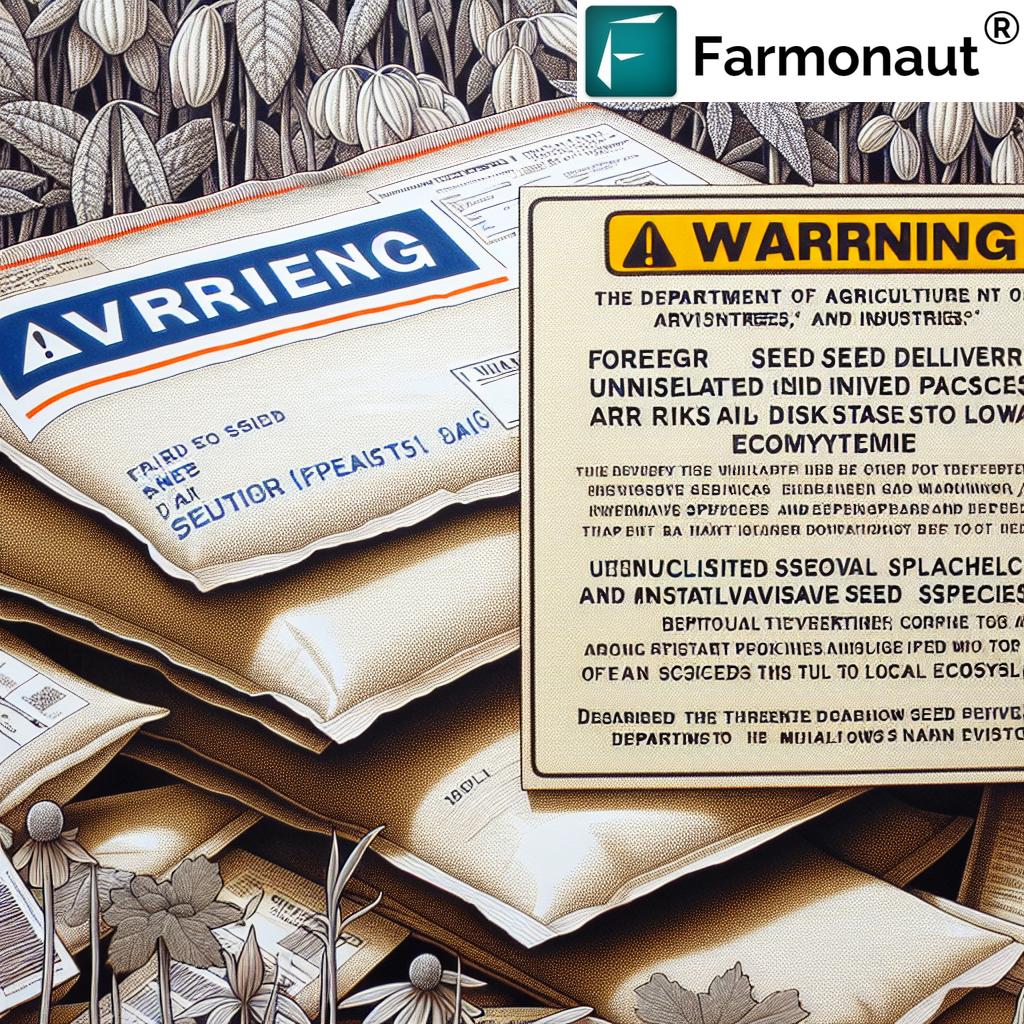USDA Pest Inspection: Shocking Tips to Save CA Crops
“Over 40% of global crop losses are caused by pests annually, highlighting the urgent need for effective inspection strategies.”
As we stand at a crossroads of agriculture and environmental sustainability, the role of USDA pest inspection takes center stage. In an era where invasive pests and plant diseases threaten the foundation of our food systems, effective inspection, early detection, and integrated pest management strategies are not just scientific ideals – they are urgent necessities. The United States Department of Agriculture, through its multifaceted Animal and Plant Health Inspection Service (APHIS), leads the charge in safeguarding crops, natural resources, and rural communities from the constant threat posed by biotic intruders.
In this comprehensive guide, we’ll explore critical pest management strategies, the architecture of agricultural pest inspection systems, cutting-edge tools for plant health protection, and groundbreaking developments impacting Californian crops like avocados in 2024. We’ll also highlight how technology innovators like Farmonaut are empowering our agricultural community with real-time, accessible solutions for tackling pest threats.
Key Facts: Global and California Pest Threats
“California agriculture faces $2.2 billion in annual losses due to invasive pests, stressing the importance of rigorous USDA inspections.”
Did you know? Our state’s agri-economy, the largest in the US, is continually threatened by invasive pests and diseases. The shocking annual impact runs into the billions, with specialty crops and export markets especially ripe for disruption.
APHIS PPQ: Guarding US Agriculture Health
The US Department of Agriculture (USDA) functions as the nation’s backbone in defending against pests, diseases, and environmental threats that jeopardize our crops, forests, and food security. APHIS – Animal and Plant Health Inspection Service – stands at the forefront of this battle with its specialized Plant Protection and Quarantine (PPQ) Program.
What is APHIS PPQ?
APHIS PPQ is dedicated to safeguarding America’s agriculture, forestry, and natural resources from destructive pests. The program’s mandate? Detect new and established threats, prevent entry or spread, and manage outbreaks before they spiral out of control. Its role combines science, policy, boots-on-the-ground inspection, and strong collaboration with state departments, universities, industry partners, and regulatory services.
- Comprehensive pest inspection and quarantine measures to intercept harmful pests and diseases at borders, ports, and nurseries.
- The application of science-based strategies drives the identification of economically and environmentally significant pests and weeds.
- Engagement of stakeholders across California, the United States, and international organizations to strengthen biosecurity.
By focusing on early detection, quarantine, and pest control measures, the APHIS PPQ program is a vital early warning system for protecting the health of our plants and the sustainability of our food systems.
CAPS: Early Detection of Agricultural Pests
An oft-overlooked pillar of USDA pest inspection is the Cooperative Agricultural Pest Survey (CAPS). We cannot emphasize enough the importance of survey and detection of invasive species—especially as our climate and globalized trade keep changing.
How CAPS Works
- Science-driven surveys: CAPS targets exotic and damaging pests, diseases, and weeds through national and state surveys – focused especially in high-value or vulnerable cropping regions like California.
- Collaboration: This program thrives on partnership, engaging state and federal agencies, universities, and private entities to pool resources, expertise, and rapid response capabilities.
- Critical early warning system: By identifying pests before they spread widely, CAPS surveys help prevent costly outbreaks and safeguard agricultural trade.
CAPS is a cornerstone for early detection of agricultural pests—critical for both California and nationwide food security.
- Enables timely response before pests become unmanageable.
- Ensures traceability and data-driven interventions.
- Reduces need for emergency pesticide use, supporting sustainable management.
Forest Health Protection: Combating Forest Health Threats
Pest threats are not limited to crop fields. Our forest ecosystems face continuous risk from invasive insects, pathogens, and disturbances. Effective forest health protection is a crucial extension of the USDA’s sustainability mission.
The Forest Service’s Approach to Forest Health Threats
- Detection & Monitoring: Using both boots-on-the-ground and remote sensing (including satellite), the Forest Health Protection Program conducts regular surveys to identify new and emerging threats.
- Technical Assistance: Provides advice and hands-on support to private and public land managers, helping to restore healthy ecosystems after pest outbreaks.
- Integrated Pest Management Strategies: Focuses on mitigation, resilience, and ecosystem recovery through a combination of biological, cultural, and targeted chemical controls.
Forests are not only critical to the environment—they’re an integral part of California’s agricultural matrix, water cycles, and climate regulation.
Pest Identification Services: The NIS Approach
An accurate identification of pests is the single most important step in a successful management response. This is where APHIS’s National Identification Services (NIS) shine.
- Coordinating nationwide pest identifications across state lines and institutions.
- Ensuring timely and precise data for regulatory programs – making sure every quarantine or control measure is based on sound science.
- Supporting informed decision-making for stakeholders, law enforcement, and policy makers.
Why does this matter? Misidentification can lead to unnecessary crop destruction, the spread of invasive species, or international trade barriers. NIS reduces these risks, improves speed of response, and ensures the right action is taken at the right time.
For California growers, where specialty crops are king, access to robust pest identification services is vital for both compliance and protection.
Sustainable Agriculture: Carbon Footprinting Tools
Integrated pest management is crucial, but so is tracking agriculture’s overall impact. Farmonaut’s Carbon Footprinting Solution empowers growers to monitor emissions, ensure compliance with sustainability standards, and showcase climate action—positioning California agriculture at the forefront of environmental stewardship.
International Pest Inspection Collaboration & Trade
Our fight against invasive pests in agriculture is global. International inspection collaboration is not just desirable—it’s essential.
In a world where agricultural trade is the norm, our Cali-grown avocados or almond exports may face threats from pests not yet present in the United States. Likewise, imports from nations like Mexico must meet stringent US standards to prevent the accidental introduction of invasive species.
- APHIS works with international organizations to harmonize inspection protocols and coordinate emergency responses.
- Early detection and rapid response capabilities are supported by shared data and technology across borders.
- Trading partners are monitored and held to high standards to reduce cross-border pest risks.
This system helps ensure we can trade safely, protect California’s crops and forests, and foster strong economic relationships internationally.
For added supply-chain confidence, technologies like Farmonaut’s Blockchain-based Traceability deliver unparalleled transparency—tracking produce “from farm to table” and verifying inspection history at every step.
Access to Finance: Crop Loan and Insurance Verification
Robust inspection data isn’t just about compliance—it unlocks access to finance too. Farmonaut’s Crop Loan & Insurance Solutions use real satellite data for crop verification, lowering risks for insurers and banks, and empowering farmers to qualify for crucial financial protection.
California Agricultural Pest Comparison Table
To prioritize our pest management and inspection resources, we must understand which pests pose the greatest threat. Here’s a comparative table of the most notorious agricultural pests in California: highlighting their impact, identification cues, inspection frequency, and suggested management strategies.
| Pest Name | Est. Annual Crop Damage ($ Millions) | Common Host Crops | Identification Features | Rec. Inspection Frequency | Suggested Management Action |
|---|---|---|---|---|---|
| Glassy-winged Sharpshooter | $200+ | Grapes, Citrus, Stone Fruits, Almonds | Large leafhopper, transparent wings, feeds on xylem | Weekly to Bi-weekly during active months | Regular monitoring, removal of infested plants, region-wide control |
| Navel Orangeworm | $170+ | Almonds, Pistachios, Walnuts, Figs | Pink/white larvae, webbing in nuts/fruit, adult gray moths | Pre-harvest, then monthly | Sanitation, pheromone disruption, timely harvest |
| Vine Mealybug | $80+ | Grapes, Pome Fruits | White, cottony, clustered insects on roots, vines | Bi-weekly: early and mid-season | Introduce natural predators, careful insecticide use |
| Light Brown Apple Moth | $50+ | Apples, Kiwis, Berries, Ornamentals | Small brownish moths, leaf rolling, webby larvae | Monthly or upon first detection | Quarantine, mating disruption, careful host removal |
| Olive Fruit Fly | $40+ | Olives | Brown flies, yellow markings, larval damage inside fruit | Every 2 weeks – fruiting season | Mass trapping, timely harvest, parasitoid releases |
| Asian Citrus Psyllid | $20+ | Citrus | Tiny mottled brown insect, waxy tubules, causes “yellow dragon” disease | Bi-weekly in spring/summer | Immediate removal, chemical & biological controls |
Fleet Management & Large-Scale Pest Monitoring
Large growers and agribusinesses face logistical challenges in rapid, coordinated pest response. Farmonaut Fleet Management Tools provide real-time vehicle and operation tracking, ensuring your plant health team responds fast and efficiently across multiple fields.
Looking to scale up? Explore Farmonaut’s Large Scale Farm Management App for complete plantation, inventory, and health monitoring across farms.
Seamless Integration: Web, Apps & API
Use Farmonaut’s web, iOS, and Android apps to monitor plant health and pest risk in real time, 24/7. Developers and agritech enterprises can unlock even more with Farmonaut’s Satellite Data API and detailed API Developer Docs.
“California agriculture faces $2.2 billion in annual losses due to invasive pests, stressing the importance of rigorous USDA inspections.”
Latest Challenges: The Avocado Inspection Controversy
In September 2024, the USDA made a controversial decision: transferring pest inspection responsibilities for Mexican avocados to the Mexican government. This reversal shifted authority from decades of US-controlled inspections directly to Mexican agencies.
Why Are California Growers Concerned?
- Reduced oversight: Will Mexican inspections meet US standards for accuracy and thoroughness?
- Potential pest invasions: Avocados are a valuable California crop. Any entry or establishment of harmful pests could devastate our farmers.
- Grower uncertainty: Questions about the effectiveness, transparency, and integrity of foreign inspections remain. The decision was driven by threats and violence faced by US inspection staff abroad, but the stakes for California’s agricultural industry are higher than ever.
This scenario underscores the critical importance of robust, science-based inspection protocols and ongoing stakeholder vigilance at our borders and ports.
For more, see the full story on the recent USDA Avocado Inspection Policy Change.
Integrated Pest Management Strategies: Towards Sustainability
To protect the health of our plants, forests, and natural resources, we must move beyond reactive responses and embrace integrated pest management strategies (IPM).
- Regular Inspection and Monitoring: Consistent field, greenhouse, and orchard scouting allows us to document pest pressure and detect problems early.
- Survey and Detection of Invasive Species: Participation in national programs like CAPS ensures we catch threats before they spread.
- Pest Identification Services: Use expert tools and NIS services for timely, precise pest diagnosis.
- Combination Management: IPM leverages biological controls, cultural practices, chemical inputs when necessary, and digital tools for smarter decision-making.
Over time, IPM reduces the costs of emergency measures, preserves beneficial species, and strengthens system resilience—all vital for sustainability in California and US agriculture.
Modern solutions like Farmonaut’s Jeevn AI Advisory System bring it all together: offering actionable insights, weather forecasts, and custom sustainability advice, automatically—right to your mobile device.
Farmonaut: Revolutionizing Pest Detection & Crop Health Monitoring
As growers, researchers, and agribusinesses navigate complex pest threats, advanced technology becomes our greatest ally. Farmonaut embodies this new age of data-driven precision agriculture.
- Satellite-based Crop Health Monitoring: Track plant stress, pest outbreaks, and soil moisture across individual fields or entire counties—from your phone or browser.
- AI Advisory System: Jeevn AI analyzes all available data plus real-time weather forecasts, past satellite history, and known pest/disease patterns—giving personalized pest management advice.
- Blockchain Traceability Solutions: Valuable for regulated crops and exports, blockchain confirms authenticity, protects brand reputation, and delivers supply chain confidence.
- Fleet and Resource Management Tools: Reduce loss, optimize labor and input use, and ensure compliance with evolving legislation.
- Carbon Footprint Tracking: Real-time monitoring that supports environmental compliance and sustainable branding.
- API Access for Developers: Expand the power of pest and crop health monitoring across your organization or product lines.
Want to learn more? Download now on Android, iOS, or use the web app.
FAQ: USDA Pest Inspection, Crop Protection & More
Q1. What is the most important benefit of USDA pest inspections?
USDA pest inspections provide early detection of harmful pests and diseases, helping protect crops, prevent their spread, and sustain US trade and exports.
Q2. What should California growers do to mitigate invasive pest threats?
They should participate in survey and detection programs like CAPS, use regular inspection and monitoring (including digital health tools), and follow USDA-APHIS guidance for quarantine and integrated management.
Q3. How does accurate pest identification impact management decisions?
Accurate identification ensures that control measures are targeted and efficient. It prevents unnecessary losses, reduces regulatory risks, and limits the use of resources.
Q4. Are satellite-based technologies reliable for pest detection?
Yes. Platforms like Farmonaut use multispectral data and AI to flag anomalies, detect stress, and provide actionable advice—complementing traditional inspection and survey programs.
Q5. What is the role of international pest inspection collaboration?
International collaboration is critical. It harmonizes standards, ensures both imports and exports are safe, reduces trade disruptions, and leverages shared data for rapid threat detection and response.
Q6. Who uses pest management and inspection tools like those from Farmonaut?
Individual farmers, agribusinesses, agricultural research institutions, government agencies, financial and insurance companies, and corporate supply-chain managers.
Q7. Can small farmers access advanced pest inspection technologies affordably?
Yes. Farmonaut’s subscription models make satellite crop monitoring and pest advice accessible and affordable—even for small and medium growers.
Q8. Is regular pest inspection legally required?
For regulated crops (and for maintaining market access), compliance with USDA and state-level pest inspection protocols is legally required. Regular checks also protect yields and reduce emergency interventions.
Conclusion: The Path to Sustainable Agriculture
As our world and markets grow more interconnected, the threat from invasive pests intensifies. USDA’s pest inspection system, led by APHIS, remains a vital line of defense for California—our nation’s top agricultural state—and for the broader US food ecosystem. Through comprehensive programs like PPQ, CAPS, and Forest Health Protection, and with a strong focus on precise pest identification, robust quarantine and pest control measures, and dynamic international partnerships, we can safeguard the health of our crops and forests.
However, with challenges like the 2024 avocado inspection policy shift, the importance of constant vigilance, adaptive management, and the integration of next-gen technologies—such as satellite-based farm monitoring, AI advisory systems, and blockchain traceability—has never been clearer.
Together, through proactive strategies, collaborative inspection response, and leveraging data-powered platforms like Farmonaut, we can continue to protect not just our crops, but our communities, economy, and natural environment for generations.
Ready to take your pest management and crop protection to the next level?
Stay vigilant, stay informed, and harness the power of USDA pest inspection and precision technology – for a sustainable, healthy, and thriving California agriculture.













